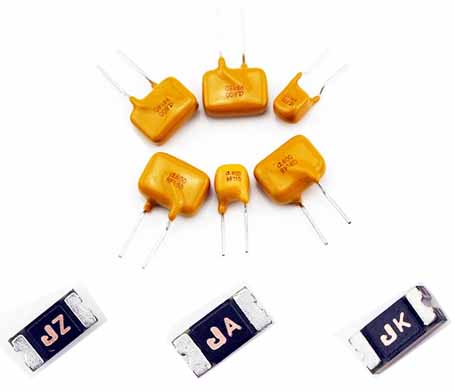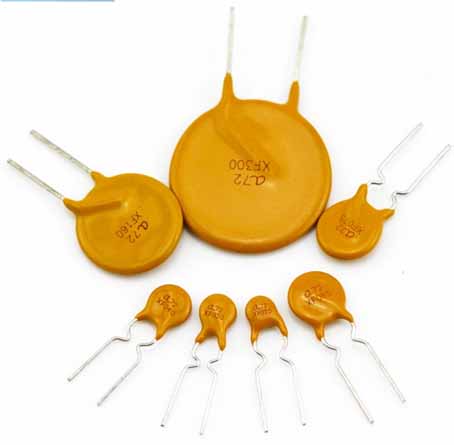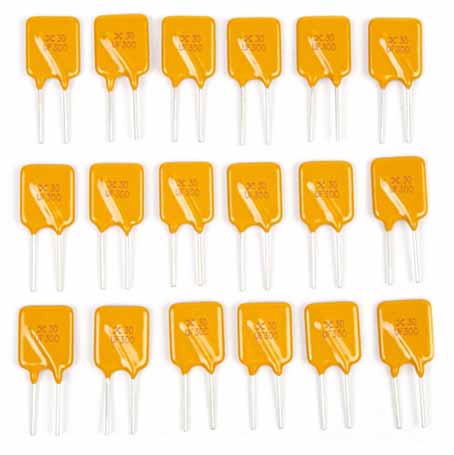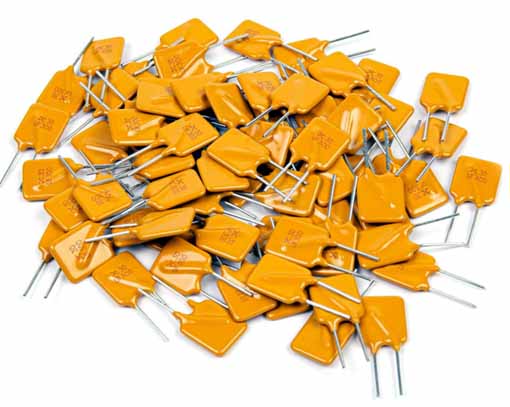Technical parameters of PTC resettable fuse

1. PTC rated zero power resistance
The resistance of the PTC resettable fuse should be packaged in stages according to the zero power resistance, and the resistance range should be marked on the outer package. After the pressure and current resistance test, the resistance change rate of each group of samples before itself is extremely poor δ|Ri after-Ri before/Ri before-(Rj after-Rj before)/Rj before |≤100%
2. PTC resettable fuse effect
The material has the PTC (Positive Temperature Coefficient) effect, that is, the positive temperature coefficient effect, which only means that the resistance of the material will increase with the increase of temperature. For example, most metal materials have the PTC effect. In these materials, the PTC effect manifests as a linear increase in resistance with increasing temperature, which is commonly referred to as the linear PTC effect.
3. Non-linear PTC resettable fuse effect
The material that undergoes a phase change will exhibit a phenomenon in which the resistance increases sharply from several to ten orders of magnitude within a narrow temperature range, that is, the nonlinear PTC effect. Many types of conductive polymers exhibit this effect, such as polymer PTC thermistors. These conductive polymers are very useful for making overcurrent protection devices.

4. Initial resistance Rmin
Before being installed in the circuit, test the resistance of the polymer PTC thermistor of the resettable fuse series under the condition of an ambient temperature of 25℃.
5. Rmax
The maximum resistance value measured after the resettable fuse series polymer PTC thermistor is activated at room temperature or after reflow soldering is installed in the circuit board for one hour.
6. Minimum resistance (Rmin)/maximum resistance (Rmax)
At the specified ambient temperature, for example: 25°C. The resistance value of the resettable fuse series polymer thermistor before being installed in the circuit will be within a specified range, that is, between the minimum value (Rmin) and the maximum value (Rmax). This value is listed in the resistance column in the specification.
7. Maintain current Ihold
The holding current is the maximum current that can pass through the resettable fuse series polymer PTC thermistor when it remains inactive. Under limited environmental conditions, the PTC device can be maintained for an infinite period of time without changing from a low-resistance state to a high-resistance state.
8. Action current: Itrip
Under limited environmental conditions, the minimum steady-state current that enables the resettable fuse series polymer thermistor to operate within a limited time.
9. Maximum current: Imax (current resistance value)
In the limited state, the maximum operating current of the resettable fuse series polymer PTC thermistor for safe operation. That is, the withstand current value of the thermistor. If this value is exceeded, the thermistor may be damaged and cannot be recovered. This value is listed in the column of withstand current value in the specification.

10. Leakage current: Ires
The amount of current passing through the thermistor when the resettable fuse series polymer PTC thermistor is locked in its high resistance state.
11. Maximum operating current/normal operating current
Under normal operating conditions, the maximum current flowing through the circuit. Under the maximum ambient operating temperature of the circuit, the holding current of the resettable fuse series polymer PTC used to protect the circuit is generally greater than the operating current.
12. Action
The process in which polymer PTC thermistors change from low resistance to high resistance when overcurrent occurs or the ambient temperature increases.
13. Action time
The time from the overcurrent occurrence to the completion of the thermistor action. For polymer PTC thermistors, the higher the current of the circuit or the higher the working environment temperature, the shorter the action time.
14. Vmax maximum voltage (withstand voltage)
Under limited conditions, the highest voltage that the resettable fuse series PTC can safely withstand when operating. That is, the withstand voltage value of PTC. If this value is exceeded, the thermistor may be broken down and cannot be recovered. This value is usually listed in the withstand voltage column in the product specification.
15. Maximum working voltage
Under normal operating conditions, the maximum voltage across the resettable fuse. In many circuits, it is equivalent to the voltage of the power supply in the circuit.
16. Conductive polymer
Here refers to the conductive composite material made of conductive particles (carbon black, carbon fiber, metal powder, metal oxide, etc.) filled with insulating polymer materials (polyolefin, epoxy resin, etc.).

17. Ambient temperature
The temperature of still air in the circuit surrounding the thermistor element.
18. Operating temperature range
The ambient temperature range in which the P element can work safely.
19. Maximum working environment temperature
The highest ambient temperature at which the component is expected to work safely.
20, power loss
The power consumed after the resettable fuse operates. It is obtained by calculating the product of the leakage current flowing through the PTC and the voltage across the PTC.
21. High temperature and high humidity aging
At room temperature, measure the resistance change of the resettable fuse series products before and after a long time (such as 150 hours) at a relatively high temperature (such as 85°C) and high humidity (such as 85% humidity).
22. Passive aging test
At room temperature, measure the resistance change of the resettable fuse series products before and after being at a higher temperature (such as 70°C or 85°C) for a long time (such as 1000 hours).
23, hot and cold shock test
At room temperature, the test result of the resistance of the resettable fuse before and after the temperature cycle. (For example, 10 cycles between -55°C and +125°C).
24, PTC strength β
The PTC thermistor has enough PTC strength and cannot show NTC phenomenon. β=lg R140°C/R room temperature≥5 R140°C, R room temperature is the rated zero power resistance value at 140°C and room temperature.
25. Action characteristics
PTC thermistors should be tested for non-operation characteristics before and after the withstand voltage and current withstand tests. And, where R is the U/I at both ends of the thermistor during the non-operation characteristic test. Rn is the initial measurement value or remeasurement value of the rated zero power resistance.
26. Recovery time
The recovery time after PTC thermistor action should not exceed 60S.
27. Failure mode test
During the failure mode test, the polymer PTC may follow the test or be in a failure state. The allowed failure mode is open circuit or high resistance state, but low resistance state or open flame shall not appear during the whole test.





